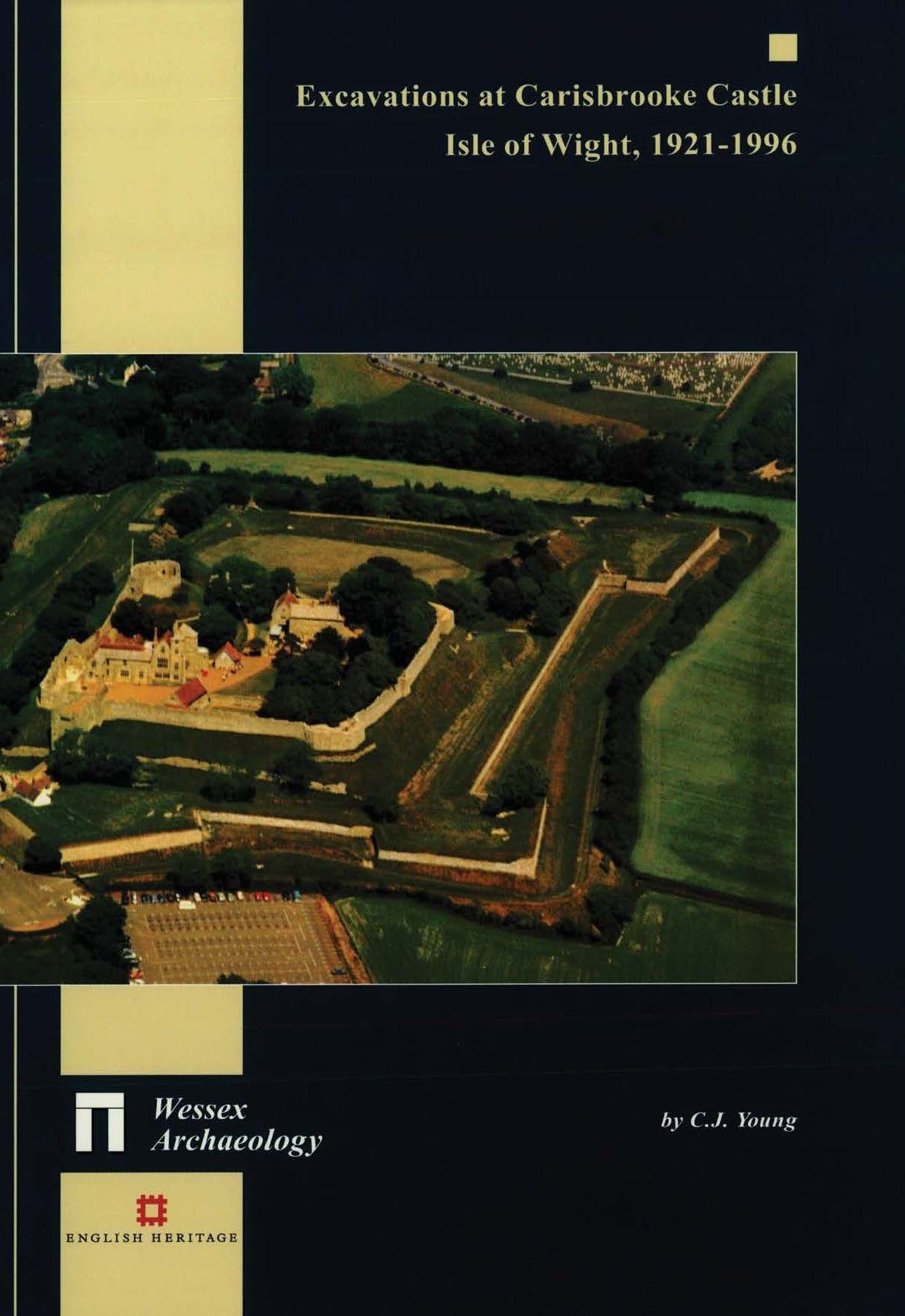Excavations at Carisbrooke Castle Isle of Wight, 1921–1996
C. J. Young

Description
Carisbrooke Castle is the only medieval fortification on the Isle of Wight. Its building and defences are still well-preserved and spectacular. A series of excavations, watching briefs, and other interventions between 1921 and 1996, concentrated mainly 1959–1969 and 1976–1982, have shed new light on the history and archaeology of the site.
Despite past suggestions or Roman and prehistoric activity, the earliest apparent use of the hilltop was for the 6th century Saxon inhumation cemetery. The first settlement was not until the late Saxon period, when the hilltop was fortified and large timber building erected inside it.
The first earthen castle was created after the Norman Conquest. This was replaced by the present motte and bailey around 1100 and had stone defences by 1136. Two domestic buildings were identified but the presumed great hall of that period still eludes discovery. The castle appears to have assumed largely its present internal plan in the 13th century. The excavations provided evidence for modifications to the defences in the 14th century and to the domestic buildings in the later 16th century. Carisbrooke was turned into a modern artillery fortress between 1587 and 1602. One of its flanker batteries was investigated.
The excavations have produced, for the first time on the Isle of Wight, good stratified sequences of medieval and post-medieval artefacts, in particular pottery. Some indications have been revealed for the diet and food sources of the users of the castle.
Details
| Published | Published By | Pages | ISBN | ||||||||||||||||||||||||||||||||||||||||||||||||||||||||||||||||||||||||||||||||||||||||||||||||
|---|---|---|---|---|---|---|---|---|---|---|---|---|---|---|---|---|---|---|---|---|---|---|---|---|---|---|---|---|---|---|---|---|---|---|---|---|---|---|---|---|---|---|---|---|---|---|---|---|---|---|---|---|---|---|---|---|---|---|---|---|---|---|---|---|---|---|---|---|---|---|---|---|---|---|---|---|---|---|---|---|---|---|---|---|---|---|---|---|---|---|---|---|---|---|---|---|---|---|---|
| Jan. 1, 2000 | Wessex Archaeology | 244 | 1-874350-27-2 | ||||||||||||||||||||||||||||||||||||||||||||||||||||||||||||||||||||||||||||||||||||||||||||||||
| License Information | |||||||||||||||||||||||||||||||||||||||||||||||||||||||||||||||||||||||||||||||||||||||||||||||||||
| Copyright © Wessex Archaeology. This work is openly licensed via CC BY-NC-ND 4.0 | |||||||||||||||||||||||||||||||||||||||||||||||||||||||||||||||||||||||||||||||||||||||||||||||||||
